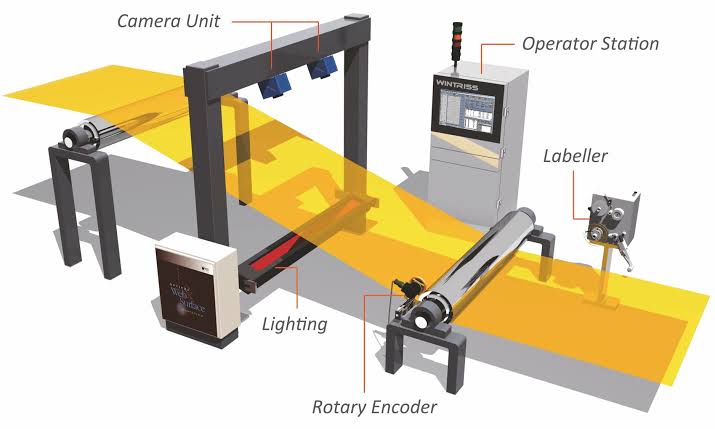In today’s rapidly evolving manufacturing landscape, ensuring product quality is paramount to maintain competitive advantage and customer satisfaction. Surface defects, whether minute or glaring, can significantly impact the functionality and aesthetic appeal of products. Automated Optical Inspection (AOI) has emerged as a pivotal process in detecting these imperfections. Leveraging advancements in Artificial Intelligence (AI), AOI systems are now capable of enhancing inspection accuracy, reducing downtime, and optimizing production efficiency.
Key Components of AI-Powered AOI Systems
Automated Optical Inspection (AOI) is a method employed in manufacturing to inspect surfaces for defects using optical imaging technologies.AI-powered AOI systems incorporate several critical components to ensure precision and efficiency:
- High-Resolution Imaging Systems:
- Cameras and optical sensors with high resolutions are essential for capturing detailed images of surfaces. These systems often include multi-angle and multi-spectrum imaging to detect a wider range of defects.
- Machine Learning Algorithms:
- AI models are trained on vast datasets of defect images to recognize patterns and anomalies. These algorithms continuously improve with more data, enhancing their accuracy over time.
- Data Processing Units:
- Powerful GPUs and edge computing systems process vast amounts of image data in real-time, enabling swift decision-making.
- User Interface (UI):
- A user-friendly interface allows operators to monitor the inspection process, review defect classifications, and make necessary adjustments.
- Integration Capabilities:
- AI-powered AOI systems seamlessly integrate with existing manufacturing systems, including robotics, conveyor systems, and quality management software.
How AI Enhances AOI for Surface Inspection
The integration of AI in AOI systems has revolutionized surface defect detection by addressing traditional challenges and unlocking new capabilities. Key enhancements include:
- Improved Detection Accuracy:
- AI models excel in identifying subtle defects that might be missed by traditional inspection methods, such as micron level scratches or surface inconsistencies.
- Adaptive Learning:
- Machine learning enables systems to adapt to variations in manufacturing processes and materials, ensuring consistent inspection quality.
- Real-Time Processing:
- AI-powered systems can process and analyze images in real-time, significantly reducing inspection times and production delays.
- Advanced Defect Classification:
- AI algorithms classify defects based on size, type, and severity, providing actionable insights for targeted interventions.
- Minimized False Positives:
- Through continuous learning, AI reduces false positives, ensuring only genuine defects are flagged, thereby optimizing production workflows.
- Predictive Analytics:
- AI-driven insights enable predictive maintenance by identifying patterns that may lead to defects, helping manufacturers preempt issues before they occur.
Types of Defects Detected by AI-Powered AOI Systems
AI-powered AOI systems are capable of detecting a wide array of surface defects, including:
- Scratches and Abrasions:
- Surface scratches that affect aesthetics and may compromise functionality.
- Cracks:
- Structural cracks that could lead to product failure.
- Dimensional Defects:
- Variations in dimensions or shapes caused by machining errors.
- Contamination:
- Detection of foreign particles, dirt, or oil residues on surfaces.
- Discoloration:
- Irregularities in surface color or finishing due to coating or painting defects.
- Weld Defects:
- Incomplete, porous, or uneven welds that compromise structural integrity.
- Delaminations:
- Layers separating in composite materials, leading to weakened structures.
- Surface Roughness:
- Inconsistencies in texture that may affect product performance or aesthetics.
Challenges and Considerations in Implementing AI-Powered AOI Systems
While the benefits of AI-powered AOI systems are substantial, their implementation comes with certain challenges and considerations:
- High Initial Investment:
- The cost of acquiring and setting up AI-powered AOI systems can be significant, especially for small and medium enterprises.
- Data Requirements:
- Training AI models requires extensive datasets of defect images, which may not always be readily available.
- Integration Complexity:
- Integrating AOI systems with existing manufacturing workflows and equipment can be technically challenging.
- Maintenance and Updates:
- Regular updates and maintenance of AI models and hardware are necessary to maintain performance.
- False Positives and Negatives:
- Despite advancements, no system is perfect. Ensuring minimal false detections requires ongoing refinement of AI algorithms.
- Operator Training:
- Skilled personnel are needed to operate and interpret data from AI-powered AOI systems, necessitating training programs.
- Regulatory Compliance:
- Ensuring the inspection process adheres to industry standards and regulatory requirements is crucial.
- Scalability:
- Adapting AI-powered AOI systems for varying production scales can pose challenges in terms of cost and infrastructure.
Future Trends in AI-Powered AOI for Manufacturing
The evolution of AI and AOI technologies continues to pave the way for transformative trends in manufacturing:
- Integration with IoT:
- AOI systems will increasingly connect with IoT devices to enable seamless data sharing and predictive maintenance.
- Edge AI Computing:
- Real-time defect detection and decision-making at the production line will become more efficient with edge AI computing.
- 3D Inspection Capabilities:
- Advanced imaging technologies will enable detailed 3D inspections for complex surface geometries.
- Sustainability Focus:
- Manufacturers will use AI-powered AOI systems to reduce waste and enhance sustainable production practices.
- Customizable AI Models:
- Future systems will offer highly customizable AI models tailored to specific industries and products.
- Augmented Reality (AR) Interfaces:
- AR will assist operators in visualizing defect locations and classifications in real-time.
AI-powered AOI systems represent a significant leap forward in surface defect detection for manufacturing. By enhancing accuracy, reducing downtime, and enabling predictive maintenance, these systems contribute to superior product quality and operational efficiency. However, careful consideration of challenges such as cost, data requirements, and integration complexities is essential for successful implementation. As AI and AOI technologies continue to evolve, manufacturers stand to benefit from increasingly sophisticated and reliable inspection capabilities, driving the industry toward greater innovation and excellence.


